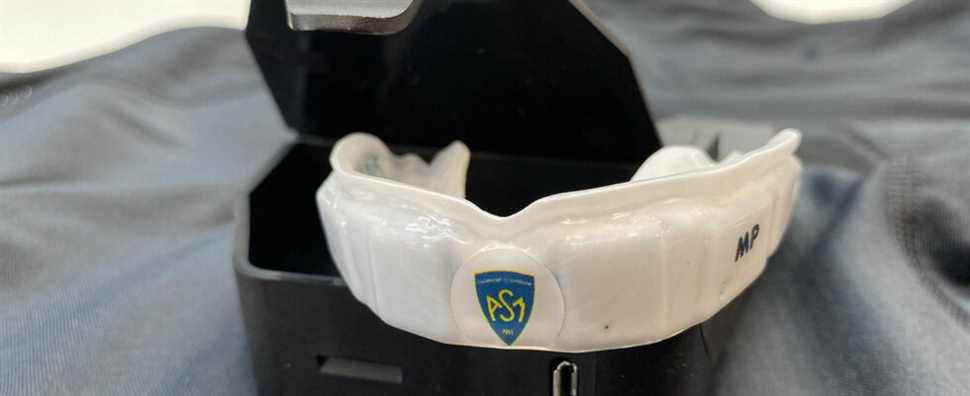In 2021, a study conducted by the Drake Foundation in Great Britain showed that 50% of high-level rugby players had an unexpected change in their brain volume due to impacts received in the head during their career. And while World Rugby chairman Sir Bill Beaumont wants to make 2022 “a year devoted to the health of rugby players”, the International Federation has launched a study aimed at understanding the frequency and nature of shocks received in training and in matches, thanks to connected mouth guards.
Launched in March 2021 with the University of Otago (New Zealand), this study concerns above all 700 male and female amateur players, from under 13 to seniors, who therefore wear connected mouthguards: “It was a technology already developed for several years, but it has become more accessible, which allows us to use it on a large scale, on a representative sample. Amateur players do not practice the same rugby and their profiles vary, their injuries also, and the impacts of shocks are not at all the same”explains Dorian Grimaud, head of communications for World Rugby.
World Rugby CEO Alan Gilpin explains how instrumented mouthguards being used by @EnglandRugby and @BlackFerns will help advance player welfare at all levels.
Both teams will be wearing them this Sunday live on @BBCSport at 14:45 GMT
: BBC Sports
—World Rugby (@WorldRugby) November 2, 2021
Several professional clubs have also been contacted by the International Federation, including ASM Clermont, which received its mouthguards at the end of 2021. The Jaunards now use this technology during their training and matches, to measure the brain-induced effects of the shocks they receive. “There is an accelerometer which measures the mechanical forces which apply during impacts, the forces of acceleration and rotation at the level of the head. Sensors measure the force of the impacts, their repetition and their incidence. Then, we store the mouthguards in a large suitcase where they are disinfected with UV and the data transfer takes place automatically”, relates Rémi Gaulmin, the doctor from Clermont. This technology is also coupled with video analysis to understand what kind of contacts the measurements collected are correlated with.

Connected mouthguards have been adopted by the majority of Clermont players, aware of the benefits they can bring to rugby: “I think it’s important to be an actor in our sport and to have the possibility of making it evolve towards more security and greater awareness. Frankly, today, I am unable to say how intensity and how often we are subjected to shocks […] If we can move things forward a bit, then it will only be beneficial for all current players and the generations that will follow.”testifies Rabah Slimani on the official website of the ASM.
The data collected then feeds the reflection of the authorities to better understand the origin of the injuries, and could lead to adaptations of the rules to prevent injuries: “Depending on the profiles of the players, if you realize that in juniors, the impacts are stronger when you fall after a tackle, you may have to think about improving the training on the tackles. Or, if you realizes that the impacts are very important in scrum for girls, so it may be necessary to adjust the rules to dispute less”considers Dorian Grimaud.
“If we notice in training that there are too many contacts which lead to traumatology, we can imagine adapting the training content in the future.”
Rémi Gaulmin, doctor at ASM Clermontat franceinfo:sport
According to Jean Chazal, neurosurgeon in Clermont-Ferrand and author of the book “This rugby that kills”, a professional player can suffer between 3 and 4 concussions between 20 and 30 years old. In 2020, more than 70 former rugby players had also taken legal action against World Rugby for negligence in the management of concussions. The International Federation has therefore stepped up its efforts in this area, and has also started experimenting with eye-tracking technology.
Thanks to virtual reality glasses, this technology makes it possible to better assess possible concussions during concussion protocols. “Unlike muscle injuries common in sport, concussions are injuries that are less accepted by practitioners and their families, and for which more effort must be made to reduce the risk. The more technology evolves, the more the sport will use it to become safer”, explains Dorian Grimaud. The results of the study conducted using the mouthguards are expected by the end of 2022.
